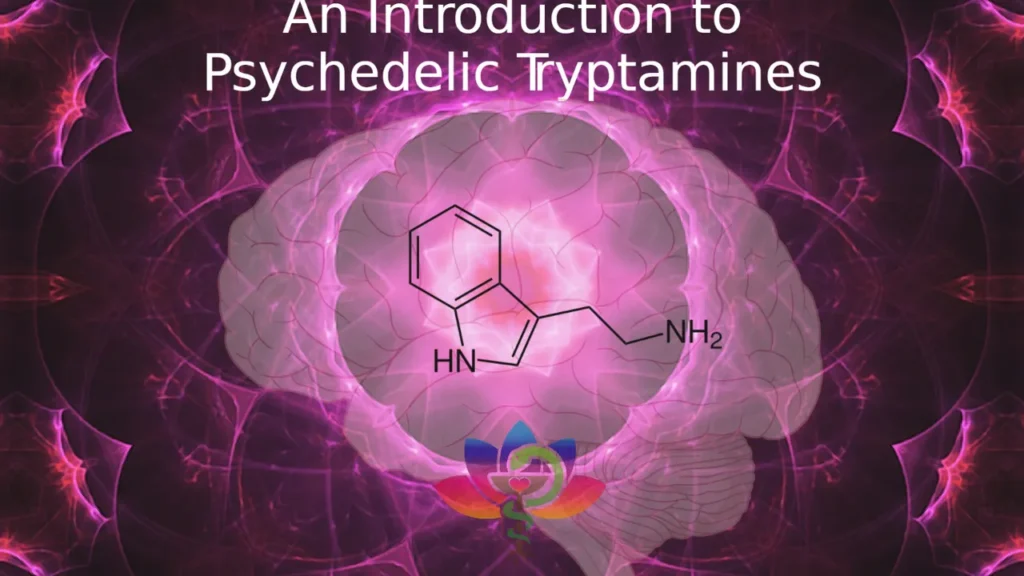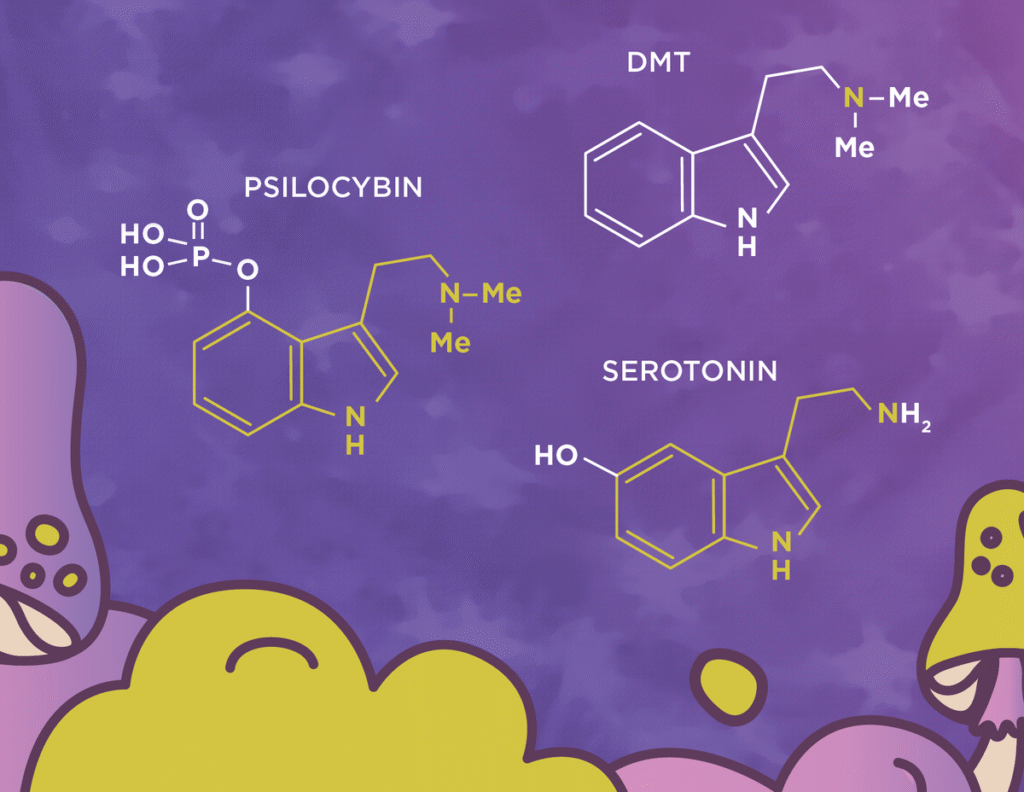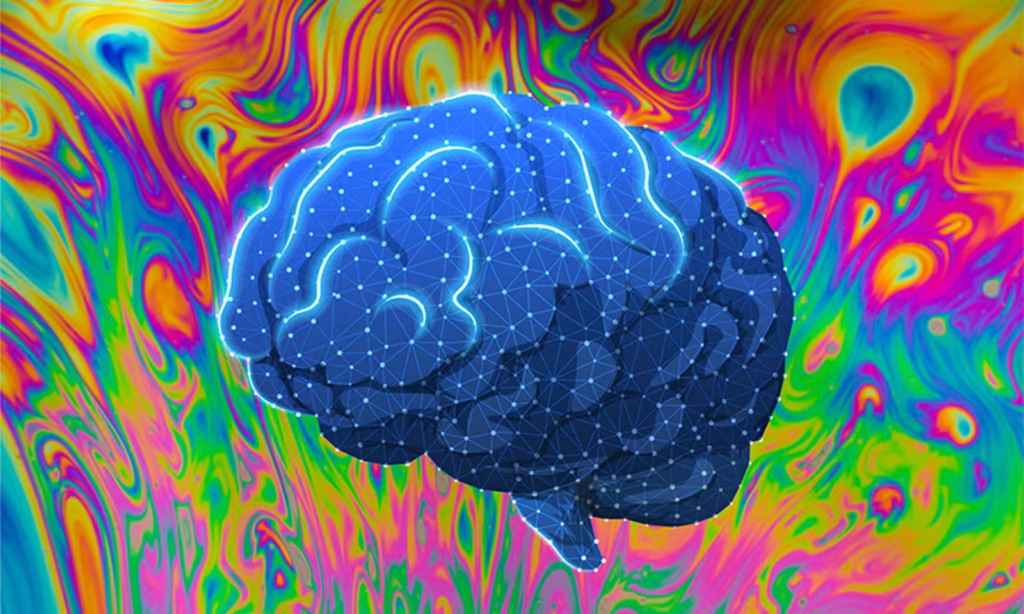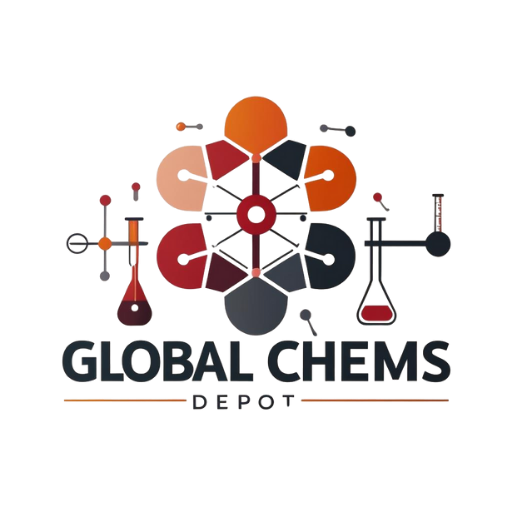Don't miss our holiday offer - up to 50% OFF!
🧠 Understanding Tryptamines: Structure, Effects, and Research Applications of lab-tested tryptamines

Introduction
Tryptamines are a fascinating class of organic compounds central to modern neurochemistry, psychopharmacology, and analytical research. Defined by their indole ring and ethylamine backbone, lab-tested tryptamines are structurally similar to serotonin — the neurotransmitter responsible for mood, perception, and cognition. This close resemblance gives them their unique ability to interact with serotonin receptors in the brain, influencing everything from sensory perception to consciousness itself.
From naturally occurring molecules like psilocybin and DMT to synthetic analogs such as 4-AcO-DMT and 5-MeO-MET, tryptamines are studied extensively to understand receptor binding, neurochemical modulation, and therapeutic potential. In this guide, we’ll explore the structure, effects, and research applications of tryptamines — and how these insights are shaping the future of neuroscience and pharmaceutical development of tryptamines structure.
1. What Are Tryptamines?
Tryptamines belong to a family of indole alkaloids formed from the amino acid tryptophan. The basic structure — an indole ring attached to an ethylamine chain — makes them chemically flexible and biologically active.
There are two main categories:
- Naturally occurring tryptamines: Found in plants, fungi, and animals (e.g., DMT, psilocin, serotonin).
- Synthetic tryptamines: Lab-created and lab-tested tryptamines derivatives designed for receptor research and neurochemical modeling (e.g., 4-HO-MET, 5-MeO-DALT, MiPT).
The small structural modifications in these molecules (like adding a hydroxyl or methoxy group) dramatically alter their pharmacological properties — changing how they bind to receptors, their potency, and duration.
2. Chemical Structure and Classification
At the molecular level, all tryptamines share a core indole ring — a six-membered benzene ring fused to a five-membered nitrogen-containing pyrrole ring — linked to an ethylamine side chain. This structure forms the basis of a wide range of naturally and synthetically derived compounds.
Common Structural Variations Include:
- 4-Position Substitution: (e.g., 4-HO-DMT, 4-AcO-DMT) influences tryptamine effects, potency and metabolic stability.
- 5-Position Substitution: (e.g., 5-MeO-DMT, 5-MeO-MiPT) alters receptor affinity and intensity.
- N,N-Substitution: Changes lipophilicity and receptor selectivity (e.g., N,N-DMT vs. DiPT).
These substitutions affect how easily a compound crosses the blood-brain barrier, how it interacts with serotonin receptor binding, and how long its effects last.
3. Mechanism of Action and Pharmacological tryptamine effects
Most tryptamines act as agonists or partial agonists at the 5-HT2A receptor, the same receptor associated with serotonin signaling. Activation of this receptor is believed to cause the hallucinogenic or psychoactive effects seen in certain tryptamines, though in research settings these effects are examined only for understanding receptor function and neurochemical pathways.
Key Receptor Targets Include:
- 5-HT2A: Mediates perceptual and cognitive effects.
- 5-HT1A: Involved in anxiolytic and mood-modulating properties.
- 5-HT2C: Contributes to sensory and emotional processing.
Because of their serotonergic activity, tryptamines are essential tools in neuropharmacology. Researchers use them to study synaptic signaling, brain connectivity, and neuroplasticity — the brain’s ability to form new neural connections.

4. Research Applications of Tryptamines
Tryptamines have found a growing role in multiple research fields — from neuroscience and psychology to analytical chemistry and drug discovery.
a. Neuroscience and Mental Health Research
Recent studies explore how certain tryptamines may modulate neuroplasticity — promoting neuron growth and synaptic repair. In controlled experiments, compounds like psilocybin have shown potential to reset dysfunctional neural circuits involved in depression and anxiety. Researchers are using these molecules to better understand the 5-HT2A receptor’s role in cognition, emotion, and perception.
b. Analytical and Forensic Studies
Analytical chemists study tryptamines to develop detection methods, understand metabolic breakdown, and improve identification of compounds using HPLC, GC-MS, or LC-MS/MS. These methods help laboratories verify chemical identity, confirm purity, and assess stability during long-term storage.
c. tryptamine pharmacology and Structure–Activity Relationship (SAR) Studies
SAR studies explore how chemical substitutions change receptor binding and biological response. For example, moving a methoxy group from the 4- to the 5-position can dramatically alter potency. This work helps researchers map the relationship between structure and activity, aiding in the design of novel therapeutic compounds.
5. Structure–Activity Relationship (SAR) and Safety Considerations
Tryptamines are prime models for studying structure–activity relationships (SAR) because even minor molecular changes yield distinct receptor affinities and effects. For instance:
- 4-HO substituents generally enhance potency and duration.
- 5-MeO analogues often produce stronger serotonergic activity.
- N-substitutions modify bioavailability and receptor selectivity.
Understanding these dynamics helps researchers design new compounds with specific receptor targets or reduced side effects.
From a safety perspective, laboratory handling of tryptamines requires controlled conditions, proper labeling, and compliance with all applicable regulations. Reputable suppliers provide Certificates of Analysis (COAs) and purity documentation to ensure consistency and reliability.
6. Laboratory Sourcing and Quality Standards
For reliable research outcomes, sourcing high-purity, lab-tested tryptamines is critical. Laboratories should:
- Obtain products from verified suppliers with transparent COAs.
- Ensure all compounds are strictly for laboratory and analytical use only.
- Maintain proper storage conditions (cool, dry, protected from light).
- Use precise measurement tools and documented experimental protocols.
At Global Chems Depot, all research materials undergo rigorous quality testing, ensuring consistency, traceability, and purity. Each batch is accompanied by a Certificate of Analysis, detailing molecular identity, purity percentage, and analytical method used.

7. The Future of Tryptamine Research
The resurgence of interest in tryptamines has opened a new era of psychopharmacological research. Scientists continue to investigate how these compounds affect the brain’s serotonin system — potentially revealing new approaches for treating mental health disorders and understanding consciousness itself.
Future studies are likely to focus on:
- Synthetic analog development for specific receptor profiles.
- Neuroimaging research to map receptor interactions.
- Microdosing research models for neuroplasticity and mood.
With ongoing advances in chemistry and pharmacology, tryptamines are poised to remain a cornerstone in neuroscientific discovery and receptor mapping.
Conclusion
Tryptamines bridge chemistry and consciousness — offering invaluable insights into how molecular structure influences brain function. Their unique combination of scientific importance, chemical diversity, and therapeutic potential continues to make them one of the most studied compound classes in modern research.
As global interest in serotonergic research expands, tryptamines stand as both a scientific mystery and a key to unlocking the complex neurochemical networks that shape perception and emotion.
At Global Chems Depot, we support this ongoing exploration by providing high-purity, lab-tested tryptamines for research and analytical use — helping laboratories worldwide advance discovery safely, responsibly, and with confidence.

[…] of modern science, providing researchers with the tools to separate, identify, and quantify chemical substances with remarkable precision. Among the most widely used techniques are Gas Chromatography–Mass […]